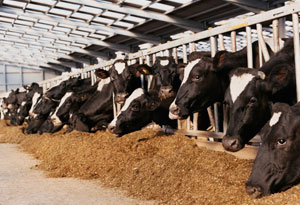What You Need to Know About the Meat You Buy

Photo: Thinkstock
You may not be butchering your own dinner any time soon, but you can get better acquainted with it. At the grocery store, market, or online, here's what you want to know:
1. Did the animal receive hormones or antibiotics? The USDA Organic and American Grassfed labels ensure that the animal was given neither. Both pose a potential risk to human health. 2. What did the animal eat? Ideally, cows should eat grass from birth until slaughter (and the label should specifically say so). In commercial feedlots, they're given corn, which is difficult for them to digest and leads to unhealthy fat in the meat. Other animals should forage for their feed as much as possible.
3. Was the animal raised outdoors? Free-range and free-roam varieties are good choices, but ask if the animals are raised outside or just have "access" to the outdoors. For veal, look for the Strauss Free Raised brand. ("Free-raised" calves roam outside with their mothers—never tethered indoors.)
4. Did the animal come from a factory farm? Consider breeds that would have been recognized in 1930 (for example, Jersey Giant chickens). Heritage breeds like these are usually raised on small farms and are genetically sound—unlike, say, the commercially bred chickens of today, some of which are engineered to have breasts so large, they're unable to walk.
For national directories of sustainable meat sources, go to EatWild.com, LocalHarvest.org, CertifiedHumane.org, and EatWellGuide.org.
Sustainable eating expert Michael Pollan helps you make the right food choices
As a reminder, always consult your doctor for medical advice and treatment before starting any program.



